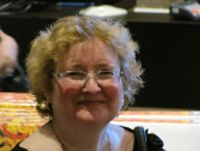Condos are sprouting up in a neighbourhood near you and might offer better value than a house in your area. A condo could be a good choice for a first-time buyer or a retired person.
Terminology differs in different regions of the country
Is it called a condo or something else? It all depends on where you live. Most provinces talk about “condominiums,” “condos” or “units,” but the legal term in British Columbia is “strata,” and the legal term in Quebec is “co-ownership” (in French, copropriété). It’s all about location, location, location! Don’t worry, though, “condominium,” “condo” or “unit” can still be used unofficially in both BC and Quebec. Condos are under provincial jurisdiction and, in Quebec, they’re governed by the Civil Code of Québec (CCQ).
The members of the condo association or syndicate include all the co-owners or copropriétaires (in Quebec), or condo owners (in the rest of Canada, or ROC), who vote for a board of directors to make decisions on behalf of all the owners and tenants (lessees or locataires in Quebec). A general meeting of the co-owners (assemblée générale des copropriétaires) must be held to vote on decisions under the CCQ.
Here is some more technical information for the province of Quebec
A co-ownership is called “divided” when the right of co-ownership is divided into fractions, each comprising a private portion and a share of the common portions: “Those portions of the buildings and land that are owned by all the co-owners and serve for their common use are called the common portions” (article 1043 CCQ).
The declaration of co-ownership (déclaration de copropriété) consists of the act constituting the co-ownership (acte constitutif de copropriété), the by-laws (règlement) and a description of the fractions. Upon the publication (registration, in the ROC) of the declaration of co-ownership, the co-owners as a body constitute a legal person, which is called a syndicate.
As mentioned above, a co-ownership comprises common portions (parties communes) and private portions (parties privatives). You may also see the expressions “common or private area,” “common or private element” or “common or private property” used. However, don’t take for granted that these terms mean the same thing legally as “common portion” and “private portion,” which are the terms used in the Civil Code of Québec. These other terms may be used unofficially, though.
What’s yours is mine, but what’s mine isn’t yours
In Quebec, when you buy a condo, it’s a fraction of a divided co-ownership property, which means that you’re adopting a community living lifestyle. As you know, co-owners, or their lessees in some cases (co-owners can rent their units if permitted to do so under the co-ownership’s by-laws), have certain rights to use the common portions, while individual owners have right of access to their private portions. Common portions may be located inside and outside the building and can include the parking lot, entrance or lobby, hallways, stairs, basement garage, gym, pool and gardens, among other things.
For more information, please read the Language Portal blog post “Condo dreaming in Quebec” and the article “Condorama: Reflections on the World of Condo Advertising,” published by OTTIAQ’s Circuit magazine.
A list of terms discussed in this post
- By-laws (règlement)
- Common element or common area (ROC); common portion (QC; in French, partie commune)
- Condo or condominium, condo unit or unit; strata (BC); co-ownership (QC; in French, copropriété)
- Condominium (condo) association, owners’ association; syndicate (QC; in French, syndicat)
- Constituting act of co-ownership (acte constitutif de copropriété)
- Condo owners (ROC); co-owners (QC; in French, copropriétaires)
- Declaration of co-ownership (déclaration de copropriété)
- General meeting of the co-owners (assemblée générale des copropriétaires)
- Private area; private portion (QC; in French, partie privative)
- Tenants; lessees (QC; in French, locataires)

